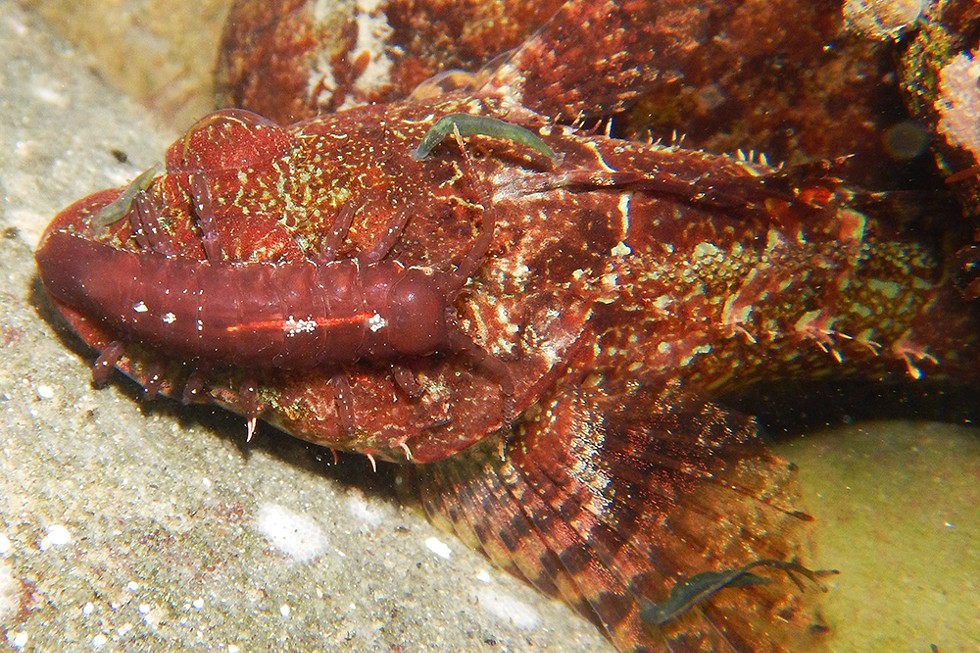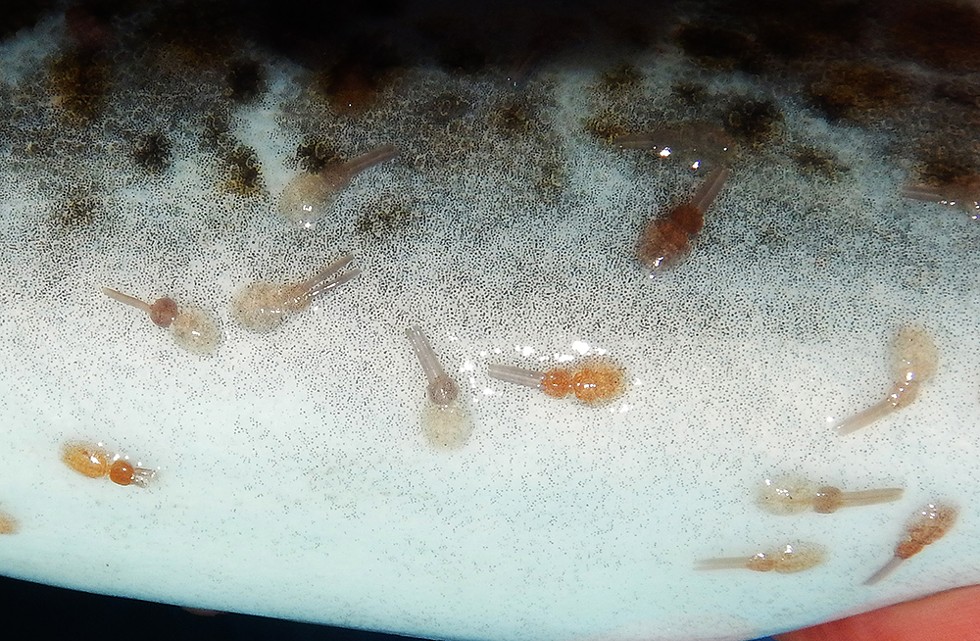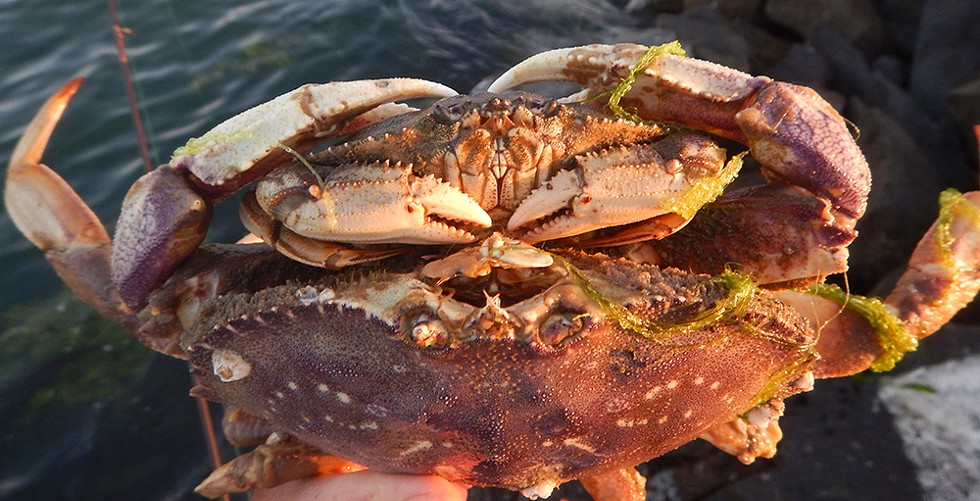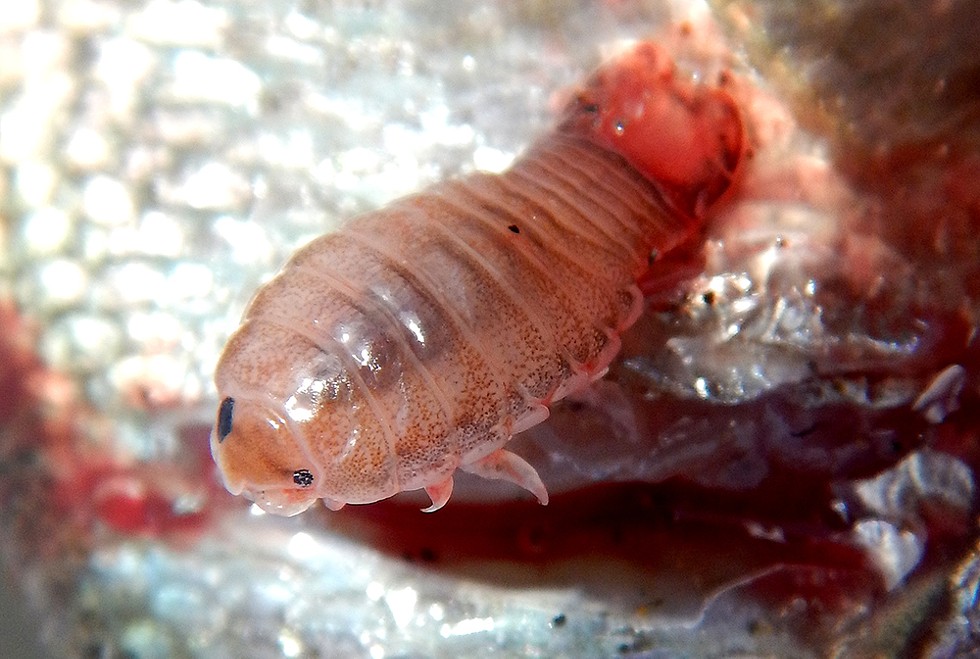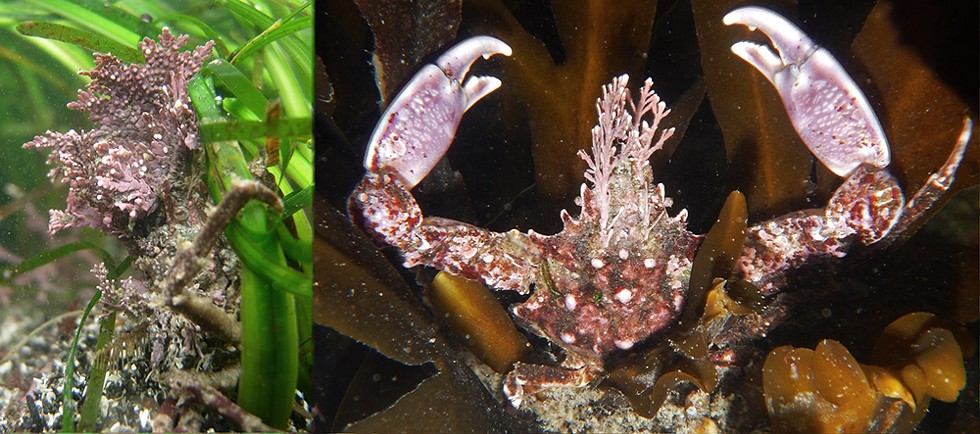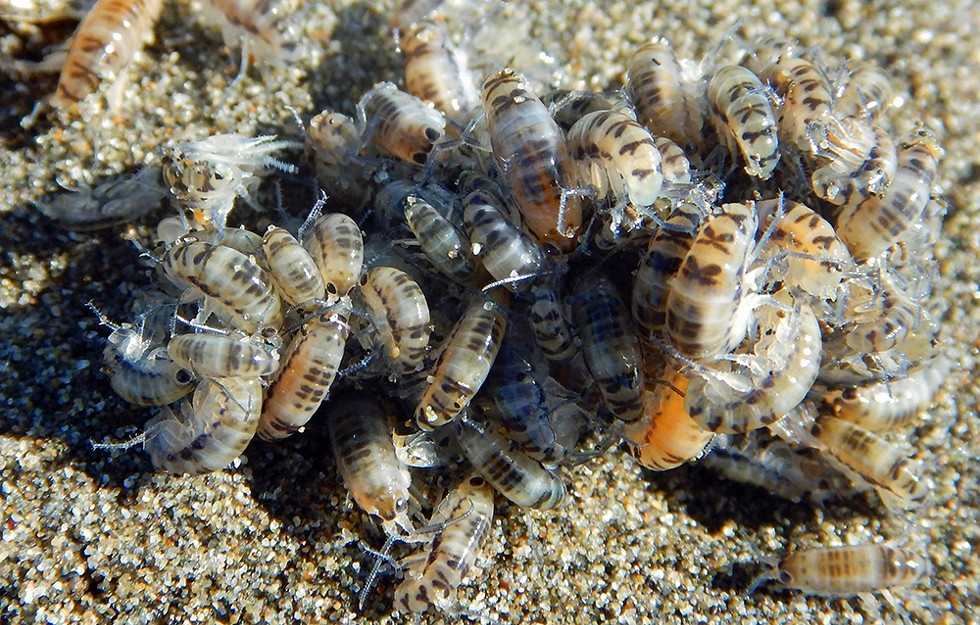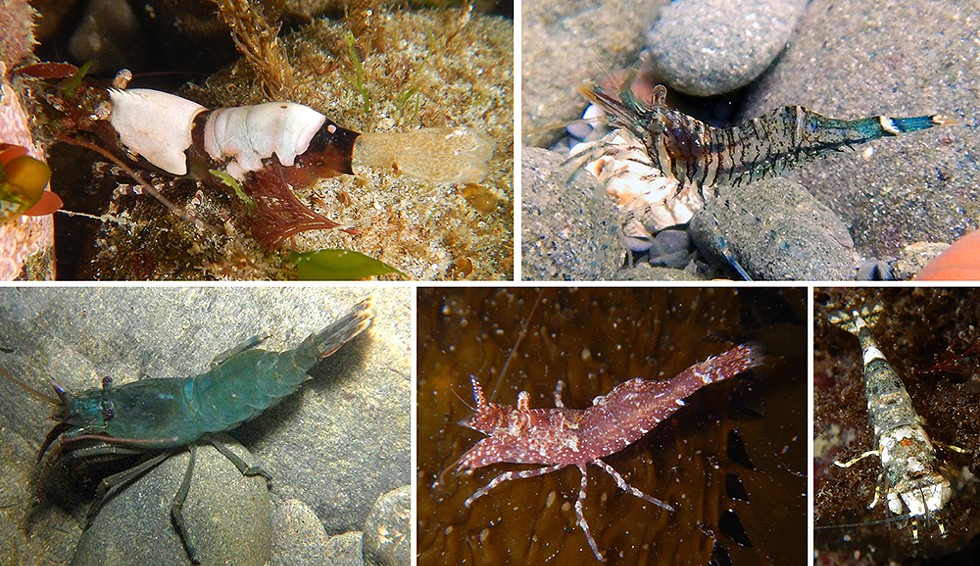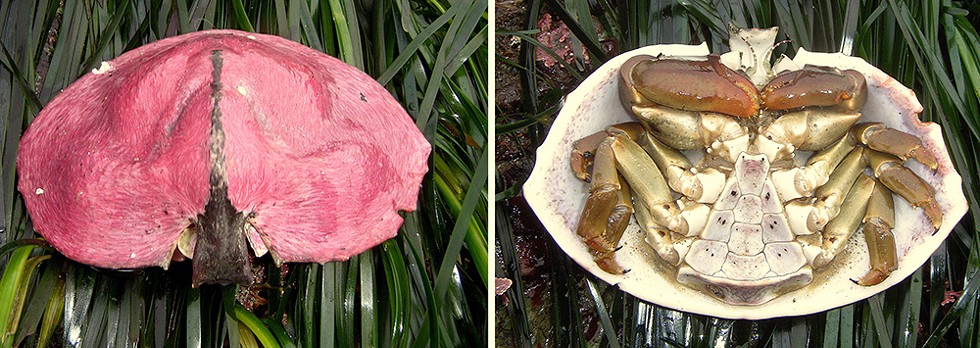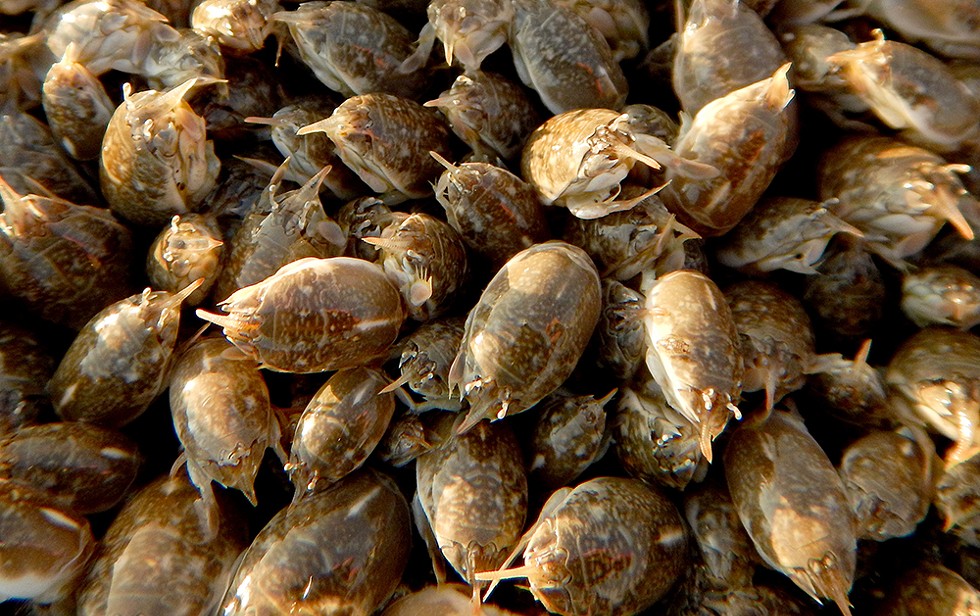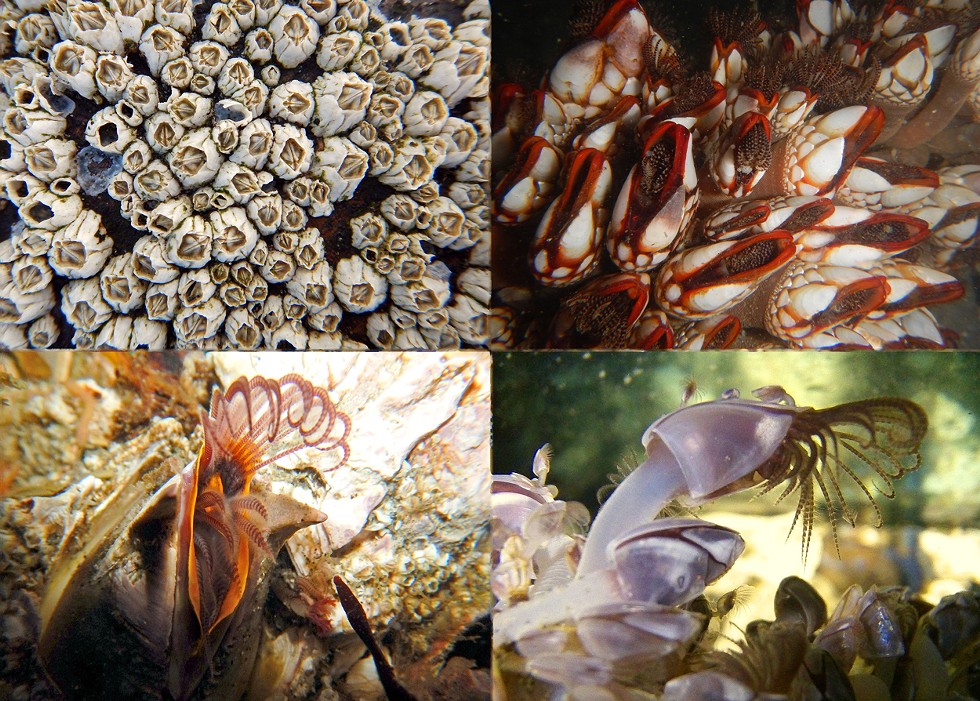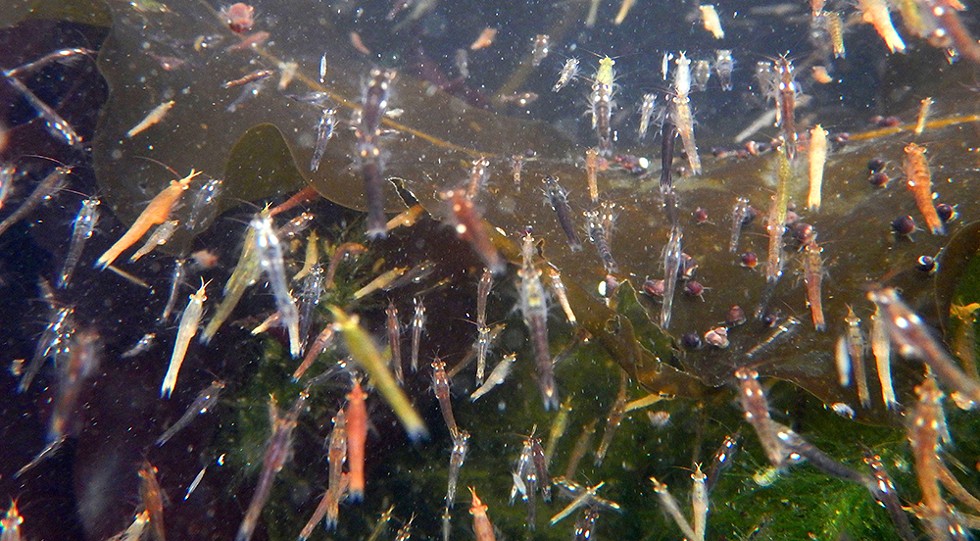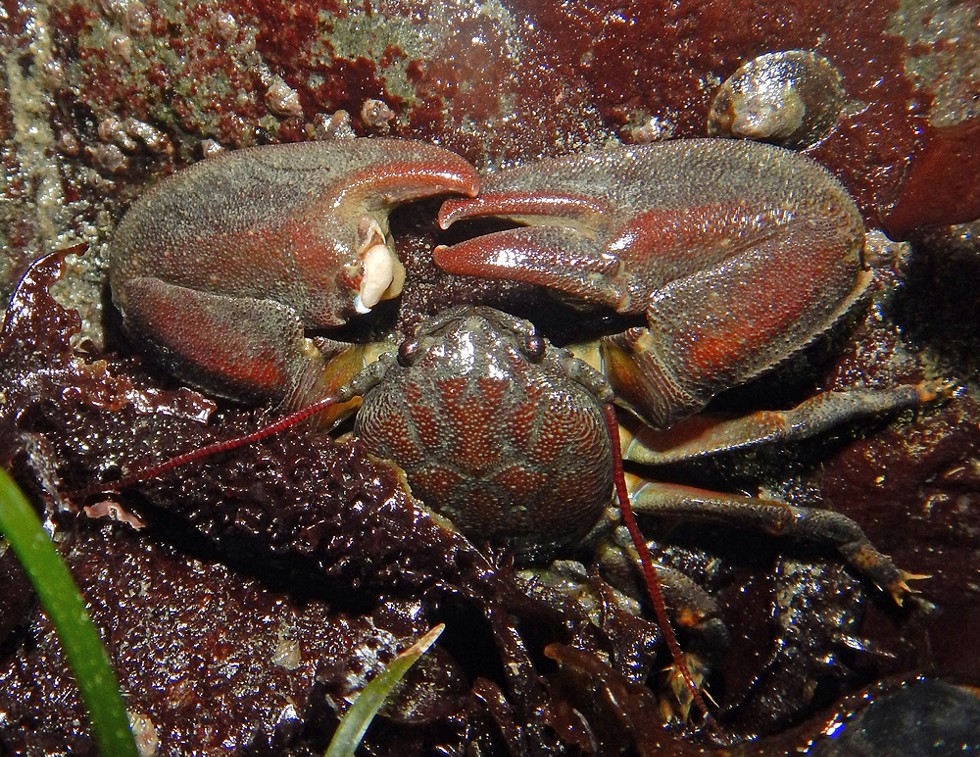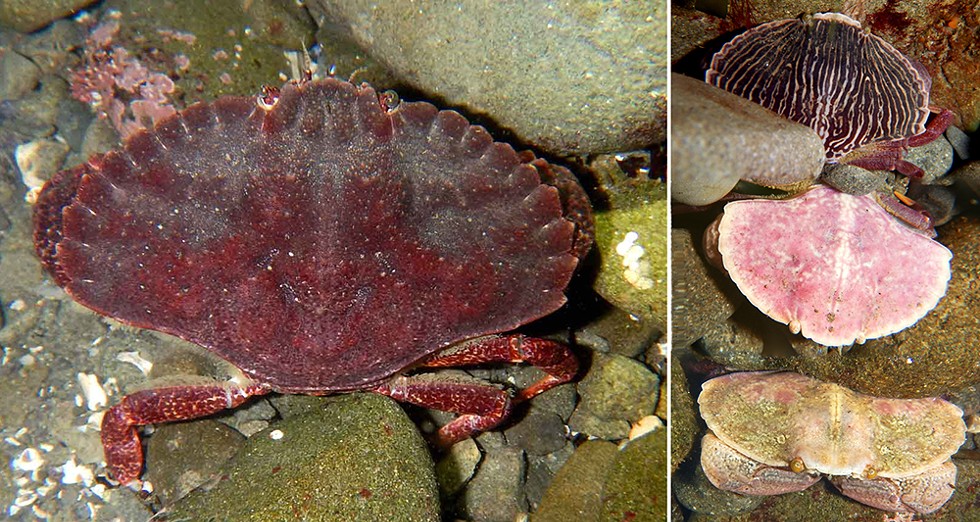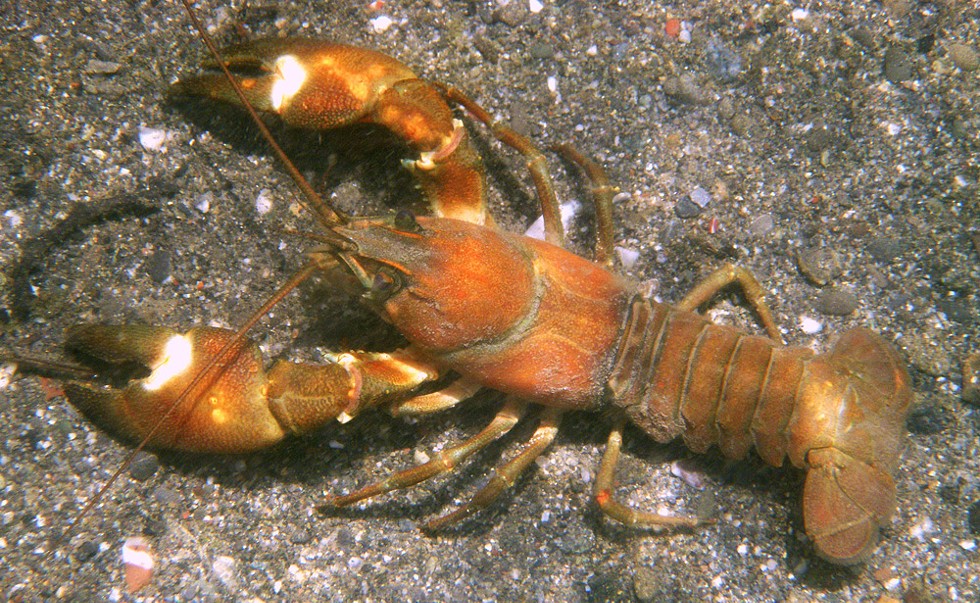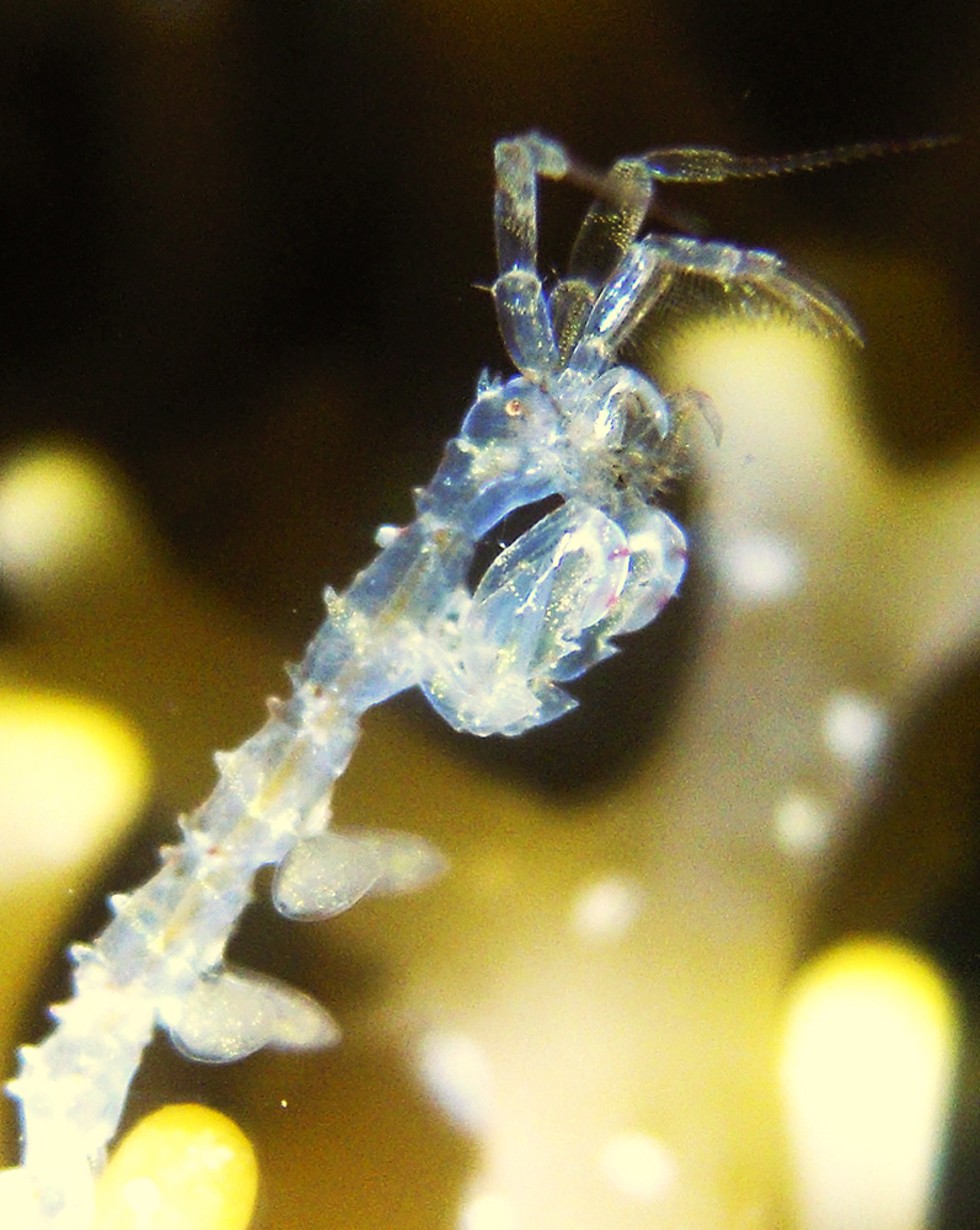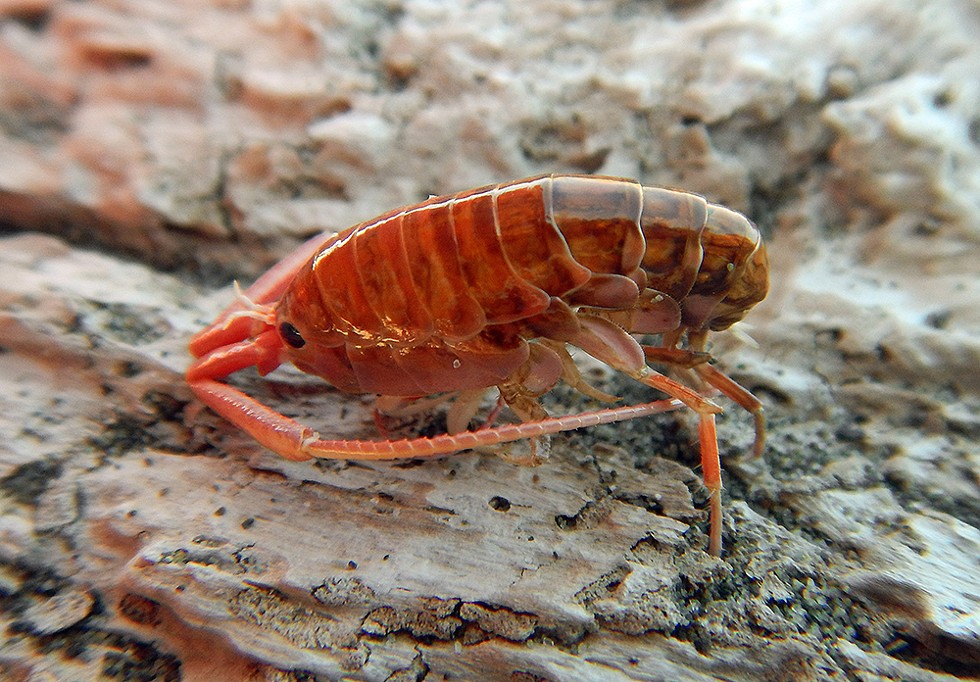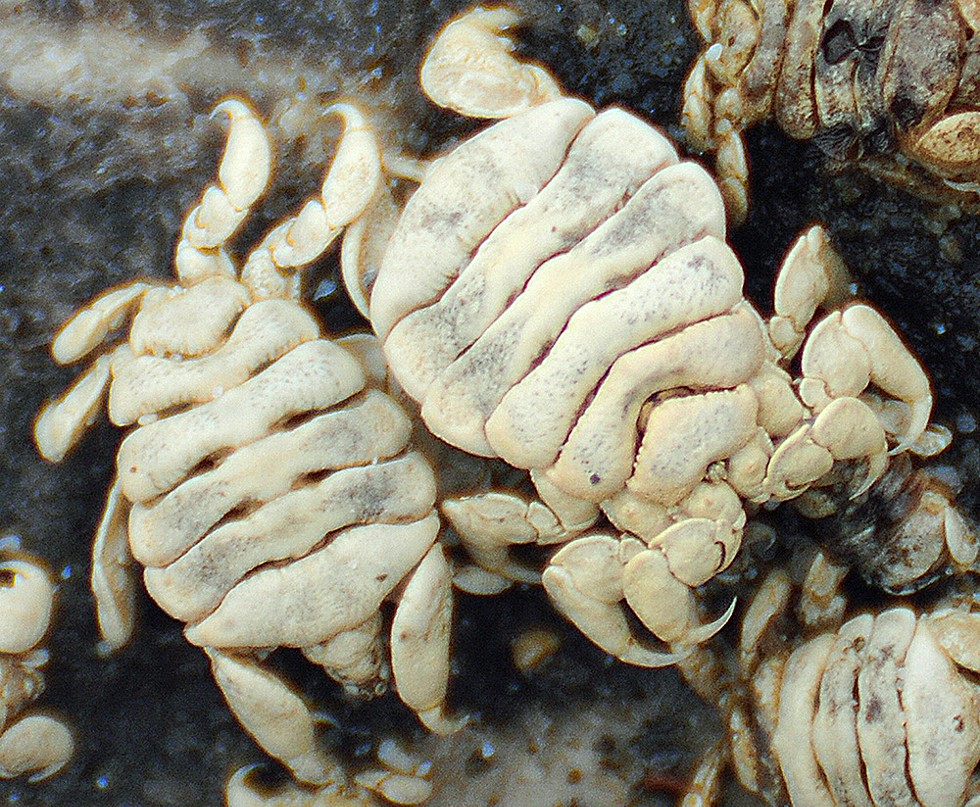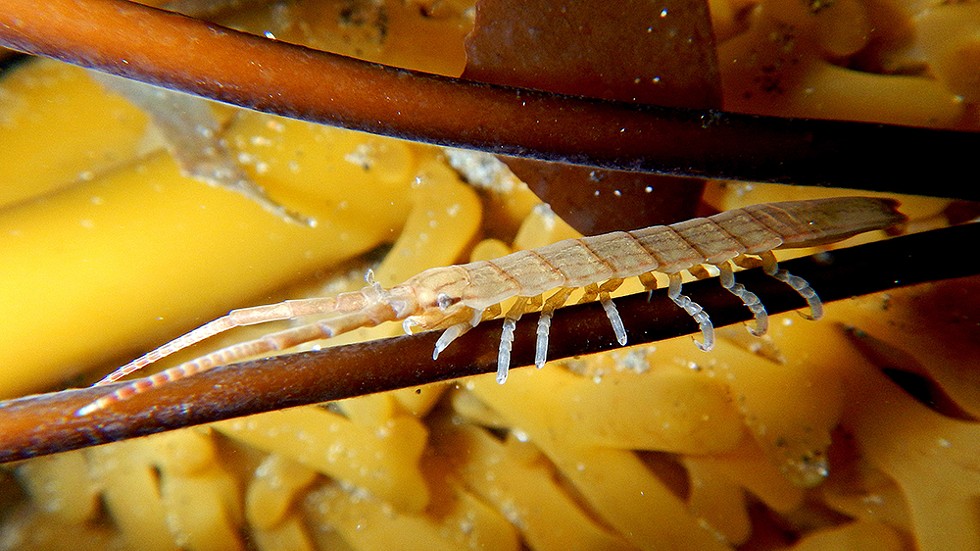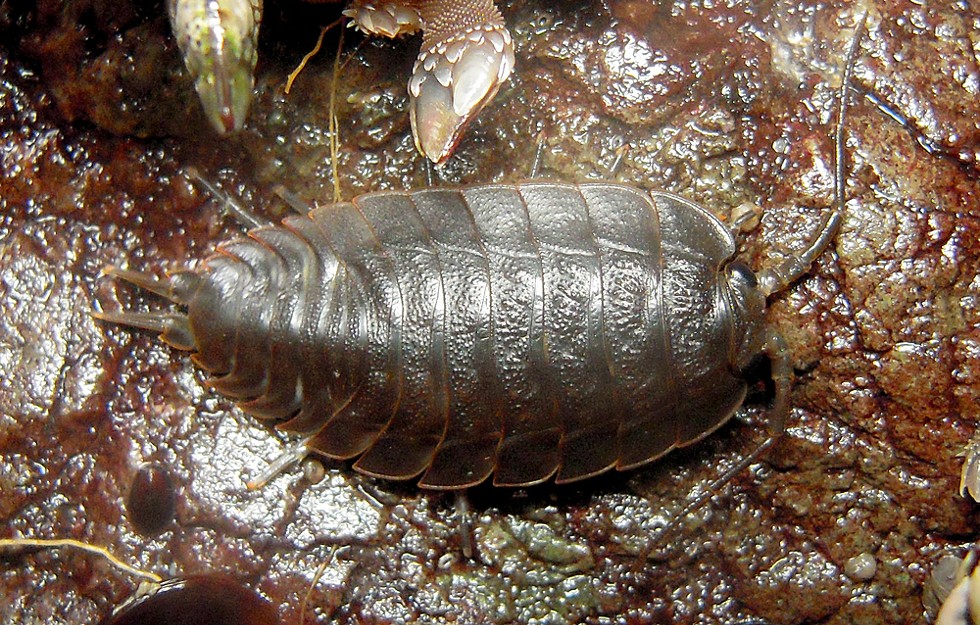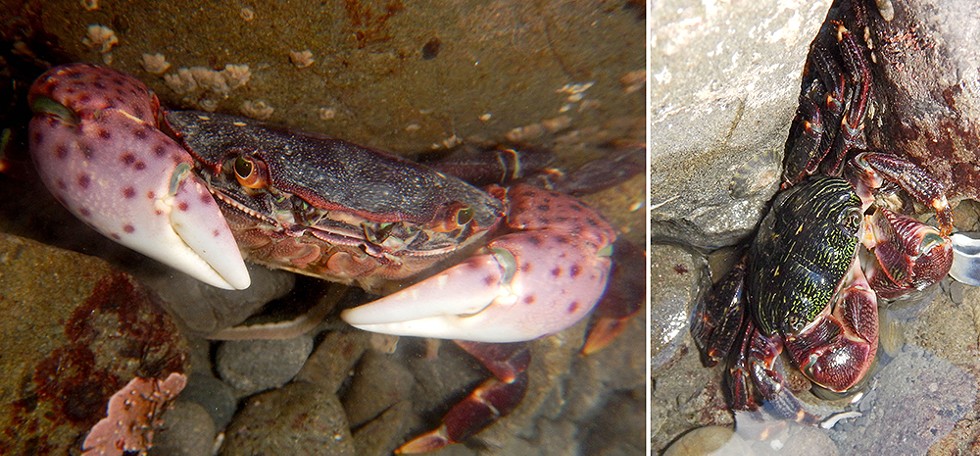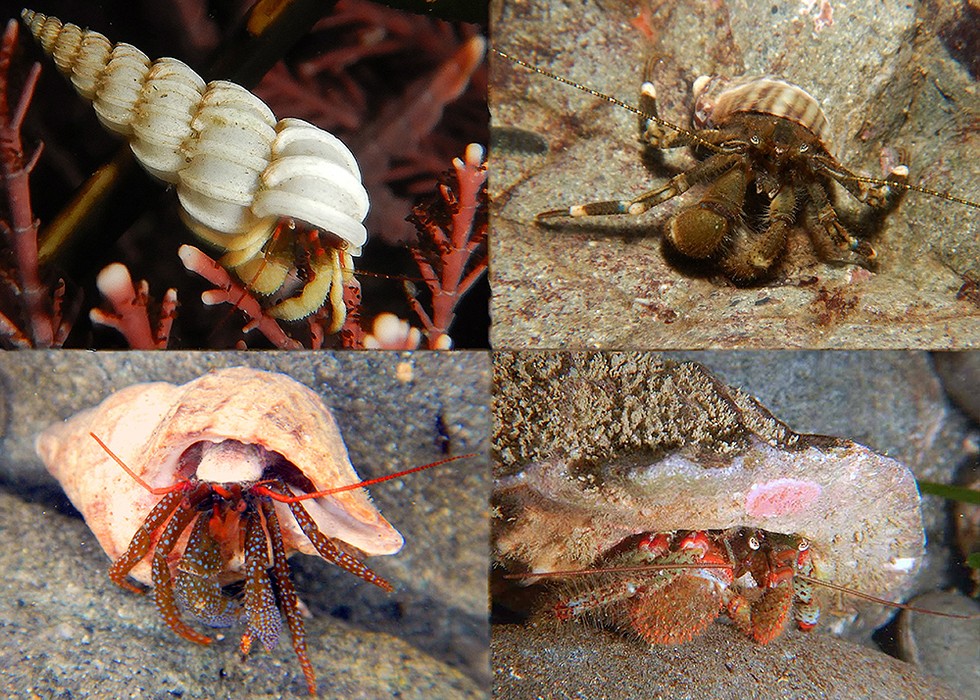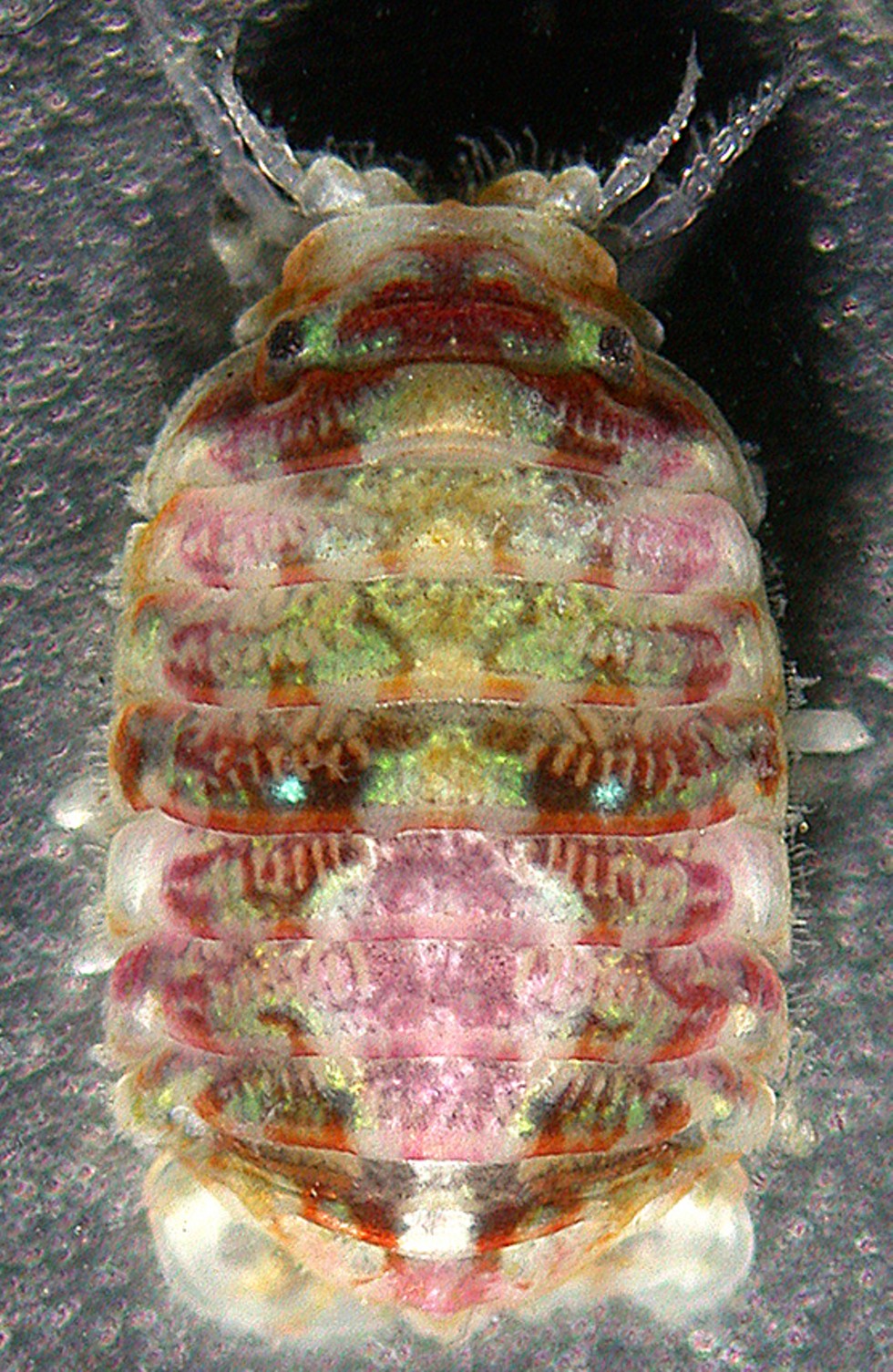[
{
"name": "Top Stories Video Pair",
"insertPoint": "15",
"component": "17087298",
"parentWrapperClass": "fdn-ads-inline-content-block",
"requiredCountToDisplay": "1"
}
]
There’s big excitement in the online crustacean nerd community. Alison Young, co-director of the California Academy of Sciences’ Citizen Science Program and Humboldt State alumnus, just invented the Twitter hashtag game #25DaysofCrustmas.
The rules of the game are simple. Fellow nerds post a crustacean picture and/or interesting crustacean fact each day of December up to the 25th — like a virtual crustacean advent calendar.
So to honor the true spirit and commercial potential of Crustmas, I give you this custom, Humboldt-centric advent calendar:
On the first day of Crustmas, I present the closest thing I have to a Nativity scene: the crab child washed up in some kelp. He had little chance of survival, so he came to live with us in the lab for about four years. He was a faithful and forgiving red rock crab. (I think of you every Crustmas, little buddy.)
On the second day of Crustmas, my true love gave to me ... parasites. The crustacean in this picture is an isopod but I think it's just a transient and undedicated parasite. An isopod of this color would normally be camouflaged in red algae. But this fish, a sculpin, blends in so well with the red algae, too, (see background) that the isopod might not even see the fish. However, the festively colored green things attached to the fish are marine leeches, which aren't crustaceans but dedicated parasites that also make a nice Crustmas decoration.
On the third day of Crustmas, here's a whole load of parasites! This swarm of copepods is on the belly of a little lingcod. The copepods swam around in a frenzy until most of the water drained off the lingcod host. But you probably don't have anything like this swimming around on your belly, so try not to think about it.
On the fourth day, we get our local bread and butter crustacean: the Dungeness crab. This picture shows the ecstatic faces of a prospective ma and pa that I've just rudely interrupted. Actually, he will wait until she sheds her shell and becomes as soft as cooked pasta. Then they'll make baby crustaceans.
On the fifth day of Crustmas, here's a lovely little parasitic isopod that I found barely alive in the mouth of a dead redtail surfperch washed up on the beach. To me, it felt like opening my Crustmas stocking and finding a cool gift.
On the sixth day, those aren't parasites on these cryptic kelp crabs. These crabs have little hooks on their backs where they attach decorations such as coralline algae — presumably as camouflage. A popular Crustmas game is to carefully tape decorations onto your bare back, but the truly devout use actual hooks. Anyway, these crabs are pretty common on our low intertidal rocky shores but can be difficult to spot.
On the seventh day, there's no rest for the crustaceans. Look at this crustacean-on-crustacean violence. These amphipods are eating a mole crab, apparently alive. But don't worry, these little bastards probably have their own parasites eating them alive from inside.
By the eighth day of Crustmas, you are probably thinking, "JFC, this is Crustmas not Parasitemas! You are waging war on Crustmas!" Now, now, here's a nice pretty basket of shrimp just for you. There are many kinds of shrimp crawling around in our tide pools — especially at night — so we'll just keep it simple with some pretty colors for ya.
On the ninth day: an umbrella crab. They don't make a very effective umbrella, so I advocate leaving them alone. But I couldn't resist flipping this one over. I've only seen them a couple of times on the lowest of low tides in rock pools. Speaking of flipping things over, please don't flip over rocks in the tide pools unless you want to kill a bunch of animals like this one.
On the 10th day of Crustmas, recall the mole crab that was being eaten alive on the seventh day? Here's a pile of young-of-the-year mole crabs. In good years, young mole crabs follow the tides up and down in massive herds. Look for them on all of our local sandy beaches.
On the 11th day we perform a sacred Crustmas tradition in which we quietly contemplate the life of a crustacean. This year I chose to channel a filter-feeding acorn barnacle. I spent the day imagining my feeding legs sweeping food to my mouth from a vast school of burritos. Advanced barnacle meditations may include being trapped in your home while your penis grows out into the neighborhood knocking on doors looking for partners. It could get attacked by dogs or even run over! But that's how the barnacles have to do it, so be thankful in this season that you're not one.
On the 12th day of Crustmas: a swarm of mysids. These are also called opossum shrimp, though they are neither shrimp nor opossum. Swimming through this colorful display was much more pleasant than swimming through a pile of opossums like the people who celebrate Opossumas do — those people are fanatics.
On the 13th day: a porcelain crab. This individual probably wants a new thumb for Crustmas. You don't usually see them out during the day. In fact, this is one of the animals you are likely to kill if you go around flipping over tide pool rocks, which thou shalt not do. If you violate this commandment, you'll be boiled alive in Crustacean Hell, which only kills your parasites so they can grow back every day for eternity. Many seemingly respectable people actually believe this, so it's OK to tell young children.
On the 14th day, we get back to red rock crabs. Remember the crab child? This is what he was. The big ones are easy to spot in our local tide pools but if you look carefully, you may spot small juveniles in a variety of colors and patterns. From the way I edited this collage it looks like the teenage crabs were hanging out together but they weren't.
On the 15th day of Crustmas, we turn to fresh water with the American signal crayfish. This one is from the Trinity River, where the species is native. But they have also been introduced into other rivers across the hemisphere where they are making a mess of things. Our second commandment is: Though shalt not transport and release crustaceans.
On the 16th day, we're again in fresh water and looking into an ephemeral pool on top of a big rock. Those tiny clam-looking things are the not-exactly-charismatic crustacean called an ostracod. They "do their thing" during watery times in spring and then die. Their eggs dry out until the next watery time, when they hatch and the new generation of ostracods do it all again. And they've been doing it for 450 million years.
On the 17th day of Crustmas, here's a so-called skeleton shrimp. First, they aren't a shrimp. They are an amphipod of the family caprelidae. Second, they don't have the kind of skeleton they were named for. They have an exoskeleton, which is part of the point of being a crustacean. Anyway, these little critters are really cool looking but sometimes they are so dense they look like a bunch of random scuz on the rocks. Find them anywhere in the ocean where there's something for them to hold on to.
On the 18th day, we have the California beach flea, which is not a parasite. It just looks like its more famous namesake. These aren't super common but they are hard to miss when they hop across your path. This is actually just the shed exoskeleton of one, so the living individual may have been hopping around nearby as happy as it could be.
On the 19th day, we return one last time to parasites with these dead gray whale lice, which were on a dead gray whale. These are isopods, not lice (which are insects), and they are in the same superfamily as the skeleton shrimp. There are at least two species in the picture. Have yourself a smelly little Crustmas.
On the 20th day of Crustmas, we get this very long isopod attached to some kelp. Speaking of very long things, Crustmas could end tomorrow if we would have just stuck to the Roman calendar.
On the 21st day, here's Ligia the sea slater. Ligia is italicized because it is the official genus name of this rock-crawling isopod. Look for them up on rocks high in the splash zone on rocky shores. What do they eat? I have too much Crustmas shopping to go into detail but they are omnivorous, so they would probably enjoy a nice Crustmas pudding.
On the 22nd day, these northern kelp crabs are larger relatives of the cryptic kelp crabs from earlier. They also do a little decorating when they are smaller. But when they are full-grown, they like to hang out in intertidal kelp getting crusted over and either eating algae or spoiling for a fight. Besides the Dungeness, this is the only crab that has spilled my blood. Or it may have just been stigmata.
On the 23rd day of Crustmas we have two different shore crabs: the purple shore crab (purple spots) and the lined shore crab. These high intertidal and splash zone crabs overlap in both tidal and latitudinal ranges. That means they come together often and clash over territory. That's how we know the shore is a holy place.
On the 24th day, I'm too busy wrapping Crustmas presents for much other than this collage of various hermit crabs from our local tide pools. Legend has it that Santa Claws (heh, heh) is a hermit crab.
On the 25th day of Crustmas, I don't know what species of isopod this is, but I call it the Crustmas decoration isopod. If it weren't so tiny, it would look great on top of your Crustmas tree. But regardless of your particular traditions, have a happy, parasite-free holiday!
Biologist Mike Kelly writes the Journal's monthly Washed Up column and science-based satire as M. Sid Kelly (available on Amazon). He prefers he/him.
Speaking of...
-

Resentencing, CASA Kids and Freaky Fish
Apr 19, 2024 -
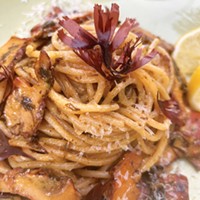
Sunken Seaweed's Dual Mission
Apr 11, 2024 -
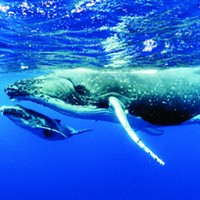
Making Change: Love
Apr 11, 2024 - More »
Comments
Showing 1-1 of 1
more from the author
-
Hot Tomcod Action
- Apr 18, 2024
-
Wandering Meatloaf
- Mar 7, 2024
-
Sea Palm Crime
- Jan 11, 2024
- More »
Latest in News
Readers also liked…
-
Through Mark Larson's Lens
A local photographer's favorite images of 2022 in Humboldt
- Jan 5, 2023
-
'To Celebrate Our Sovereignty'
Yurok Tribe to host gathering honoring 'ultimate river warrior' on the anniversary of the U.S. Supreme Court ruling that changed everything
- Jun 8, 2023

